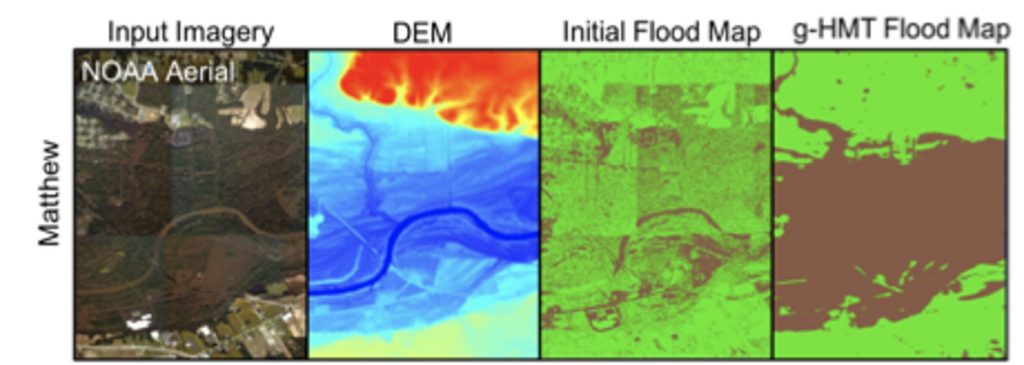
Dr. Zhe Jiang is joining UF in August of 2021 as an Assistant Professor in Computer & Information Science & Engineering (CISE), and affiliated with the Center for Coastal Solutions as part of the cluster hire for Artificial Intelligence in Coastal Systems. His broad research areas include artificial intelligence, data mining, and machine learning, with a particular focus on analyzing geospatial and spatiotemporal data in the context of interdisciplinary applications in Earth sciences, agriculture, transportation, public health, and public safety. Dr. Jiang’s research has been sponsored by the NSF, NOAA, USGS, and UCAR. He received his Ph.D. in computer science from the University of Minnesota in 2016. Before joining UF, Jiang was an assistant professor at the University of Alabama.
Dr. Jiang’s recent research lies in an emerging field of ‘GeoAI’. Over the last decade, AI and deep learning technologies have revolutionized society with tremendous success in computer vision and natural language processing applications. With a large volume of geospatial and spatiotemporal data being collected from various sources (e.g., GPS trajectories, Earth observation imagery, ground or waterborne sensor observations, geosocial media, and climate model simulations), there is a growing anticipation of the same level of accomplishment of AI in Geo-domains (a.k.a. GeoAI). However, GeoAI faces unique challenges such as spatial and temporal autocorrelation, heterogeneity, multiple scales and resolutions, domain physics and constraints, and the paucity of ground truth. Dr. Jiang’s lab is actively investigating cutting-edge GeoAI models, algorithms, and tools to address these challenges.

For example, one of his ongoing projects studies novel terrain-aware spatial machine learning model for observation-based riverine flood inundation mapping from satellite images. Dr. Jiang’s team developed a geographical Hidden Markov Tree (HMT) model, a probabilistic graphical model tying similar space and topography in the same way that a human analyst visually “assumes” the continuity and connectivity of flood points with similar or lower topography and through obscured views. Unlike existing methods for flood extent mapping from satellite images based on image classification, the HMT model explicitly incorporates the topography constraints to overcome image noise and obstacles (e.g., tree canopies), as shown in the figure below. His team is collaborating with researchers from NASA, USGS, NGA, and NOAA to deploy the tool to generate flood map data products for real-world flood disaster response and the validation of the NOAA National Water Model.
In his own words,
My career passion is to explore interdisciplinary GeoAI research that not only advance machine learning (deep learning) foundations but also make transformative impacts in addressing grand societal challenges. The Center of Coastal Solutions and the university-wide AI initiative at UF provide rich research opportunities to investigate innovative AI techniques for spatiotemporal data. I am looking forward to learning from and collaborating with other researchers affiliated with CCS on coastal challenges (e.g., water quality, coastal floods, public health issues).
Announcement! Dr. Jiang’s lab has several open Ph.D. positions related to GeoAI. For details, please visit this webpage: https://www.jiangteam.org/team.html